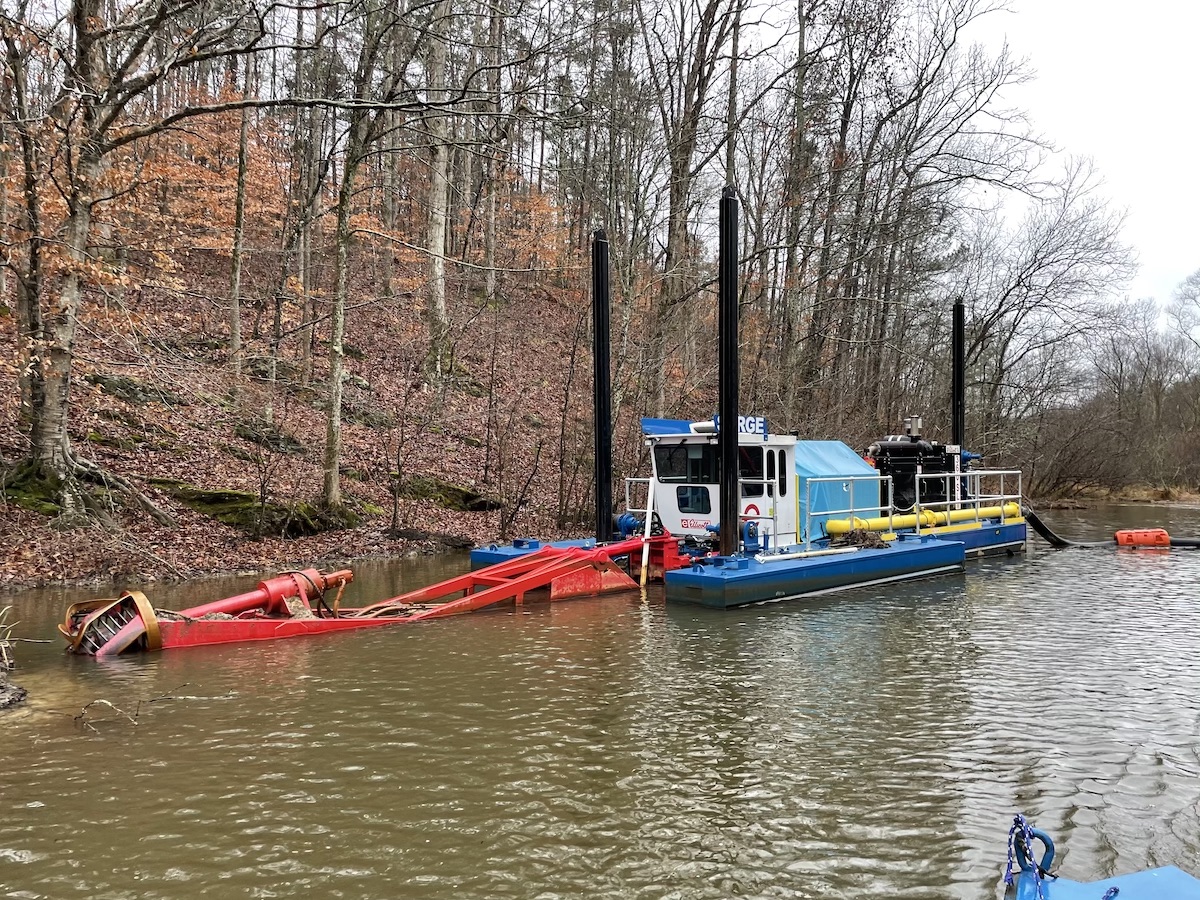
Dredging
Bathymetric surveying is
the measurement of the depth
of water in a lake.
1 cubic yard of soil weighs about 2,700 pounds.
State waters are any waterway
not confined to a single property.
Still Have Questions? Just give us a call at 877-499-SAND. We look forward to serving you!
Dredging Services based in Atlanta, Georgia
RSI is a leader in dredging in the southeast United States, based in Atlanta, Georgia.
River Sand specializes in inland dredging of freshwater lakes, streams, and ponds as well as wastewater and industrial lagoons. Dredging is a unique industry but we have been dredging for decades. Our experience, along with a vast “toolbox” or inventory of specialized dredging equipment is how we can provide you with the best solution to remove the sediment, muck, or sludge from your lake, pond or lagoon.
Restore the beauty and usefulness of your pond, lake or stream with our hydraulic dredging services or mechanical dredging services.
Dredging is a low-impact, environmentally friendly method of removing excess sediment build-up from bodies of water.
Dredging Services
What can dredging services do for me?
Over time, sediment builds up in lakes, ponds and streams. Dredging removes problem-causing sediment to restore your pond, lake, or stream to its former beauty and health. Dredging sludge or muck from your lagoon can re-establish the functionality.
River Sand Inc. serves Greater Atlanta and the rest of Georgia, and we’ve done completed dredging projects all over the southeast (even international projects). No project is too small or too large!
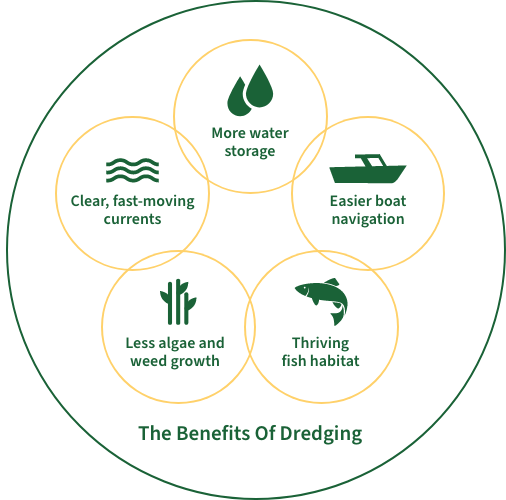
Dredging Equipment
Hydraulic Dredge
RSI offers hydraulic dredging. Hydraulic dredging or sometimes called pump dredging is a floating barge that vacuums the sediment from beneath the water’s surface and pumps it via a pipeline to a location for disposal or dewatering. We have dredges that are small one-man, diver operated systems up to large dredges that must be trucked in multiple tractor trailer loads and assembled with a crane. The most common sized dredges we utility are 6”, 8”, 10”, and 12” size pumps. River Sand also has different types of dredges including auger cutterhead, hydraulic cutterhead, swinging ladder, cable operated, remote controlled, and aggregate/sand dredges. Dredging is not a one-sized fits all application. Different dredges pump sediment and muck in varying volumes and distances based on sediment type (sand/silt/clay content, abrasiveness, gravel, etc.). Some of our dredges can pump up to a mile, but 1,000 to 2,000’ feet is a more common distance for efficient pumping. RSI can place one of its many in-line booster pumps to essentially pump any distance (however this is usually limited by cost or other factors). The pipeline is usually plastic and sealed to prevent leakage. It comes in various size diameters and can be routed easily through small spaces or openings for access to areas with low impact.
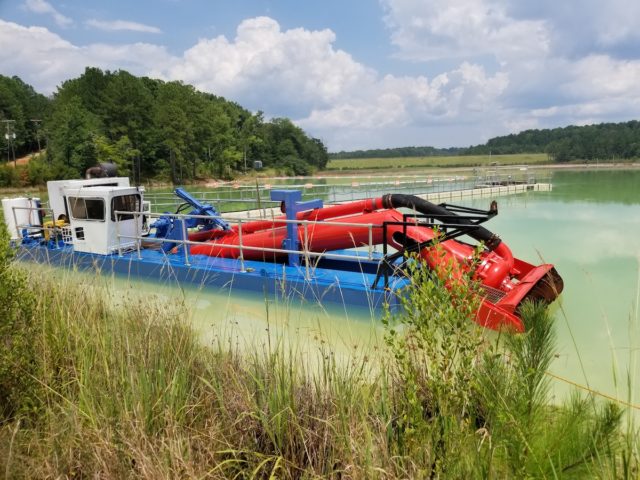
Mechanical Dredge, Excavators and Backhoes
RSI offer mechanical dredging. Mechanical dredging refers to the removal of sand, sludge, or sediment with an excavator, backhoe, dragline, clamshell, or other equipment that excavates material. Our most common tool is the excavator or back hoe. RSI has an extensive inventory of different sized excavators (weight, reach, and bucket capacity). Many of our smaller excavators can access areas with limited disturbance, and some of our larger excavators can move material efficiently. Most of our excavators we use for dredging have an extra-long arm or boom. These are called long reach excavators and are specifically designed for this application (which is why a grading company typically does not have one for working with dirt). Long reach excavators can reach 2 to 4 times the reach of a standard excavator of the same size. RSI has long reach mini excavators and large excavators. The average reach is 60’ which allows material to be removed from a vast distance and relayed for efficient removal. RSI also has “Spydee”, a specialized excavator on legs with wheels for access to step over walls and ability to clean out under docks.
Amphibious excavators are the most unique asset we utilize. These excavators have tracks replaced by larger tracks with pontoons. RSI uses various sizes of these excavators to remove sediment around docks, in swamps/wetlands, lake restoration with sediment above the water level, and most importantly the large debris and vegetation that a hydraulic dredge cannot pump.
Draglines are cable operated cranes with a bucket that scoops out sediment. The efficiency and technology of excavators has replaced draglines place in most applications but there are certain applications where they can be advantageous. Clamshell dredging is another option but often is limited off-shore dredging and larger projects where it can be mobilized. River Sand even has this equipment in inventory but it is the most uncommon practice of mechanical dredging for our type of project.
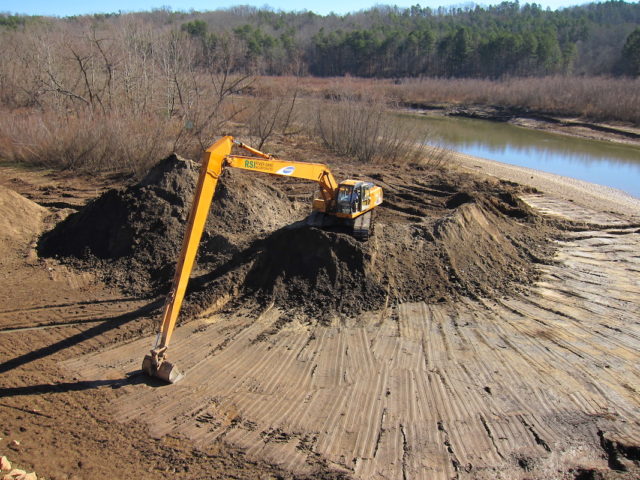
Lake Dredging – Pond Dredging – Lagoon Dredging
River Sand, Inc. takes projects from start to finish, literally. Dredge design and fabrication is an aspect of our business and we actually builds dredges from the ground up. Our fabrication facility allows us to incorporate the field experience gained into the very design of our dredges for the next project. Dredge manufacturing is a tool that gives us an edge on production and efficiency, and contributes to years of successful dredging. We custom design each dredge to be versatile enough for specific projects. Manufacturing of support equipment, such as barges and booster pumps, is another integral part of our fabrication facility.
River Sand, Inc. can:
- Design your project
- Plant your project
- Permit your project
- Perform the dredging
- Dispose of the material
- Reclaim any disturbed property
- Repair any additional issues (dam, siphon, outfall control, fountain, etc.)
- Prepare for future maintenance
The next step is to give us a call at 877-499-SAND. Each dredging project is unique and a single one solution does not solve every dredging project. From engineers, farmers, and lawyers we can provide answers to your dredging questions. We look forward to serving you!
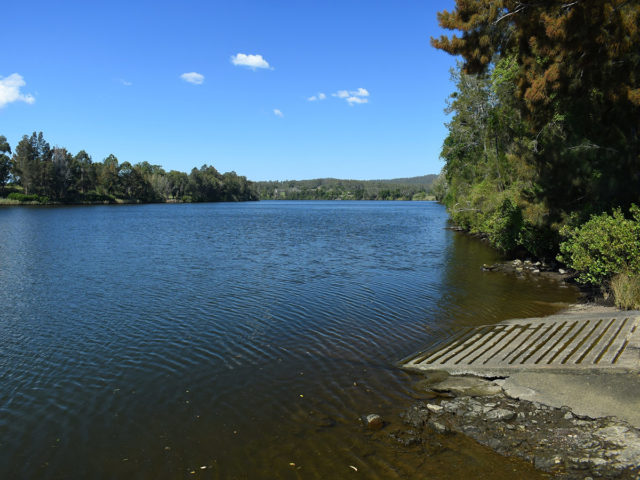
Estimate Your Dredging Project
Other projects and In-Field Mix are calculated separately.
Related Articles
See what we’ve been saying about Dredging.
Frequently Asked Questions
Do you have questions about Dredging? We have answers!
Yes, dewatering bags are a great option to pump silt into from dredging a golf course pond. Often, golf courses have areas suitable to place a dewatering tube to capture pumped sediment. This method can also allow the course and hole to remain open. Pipelines can be routed through the golf course to avoid damaging the fairways, greens, or cart paths.
Determine the characteristics of the sediment that you need to pump including the distance and vertical head. Select a pump based on its pump curve that can perform sufficiently for the project. Select an engine that has the power requirements for the pump. Determine the weight required for the pump and engine. Build the barge capable to float and balance the weight of the engine and pump. Most portable barge sections are built in 4’, 6’, 8’, 10’, or 12’ widths for transport. Attach a ladder and cutterhead capable of desired dredging depths and pump capability.
Dredging can benefit your golf course in many ways including:
- Increase water storage for irrigation and droughts
- Clean irrigation intakes from sediment
- Improve aesthetics on the golf course
- Control nuisance aquatic weeds
Prevent flooding (along with subsequent days closed)
Yes, dredging can be performed with the water at full pool or below full pool. Dredging can be done from the shoreline or with the use of a barge.
Muck can be as nasty as it sounds in your lake. The way to remove muck from your lake depends on how much you have and what kind of muck. Muck rakes can be used to clean up a small portion of muck that gathers along your shoreline or dock. Pumping muck with small trash pumps may work a little but is generally not an effective means as it stops up with sticks and trash easily. You also have to deal with the water you pump from the lake. There are some chemical and biological solutions that aid in decomposing organic matter but not the dirt portion of muck. There are even mats made to walk on it. Ultimately though, the solution to remove muck is to dredge your lake. Dredging can remove muck from any area and restore the lake back to the original depth.













